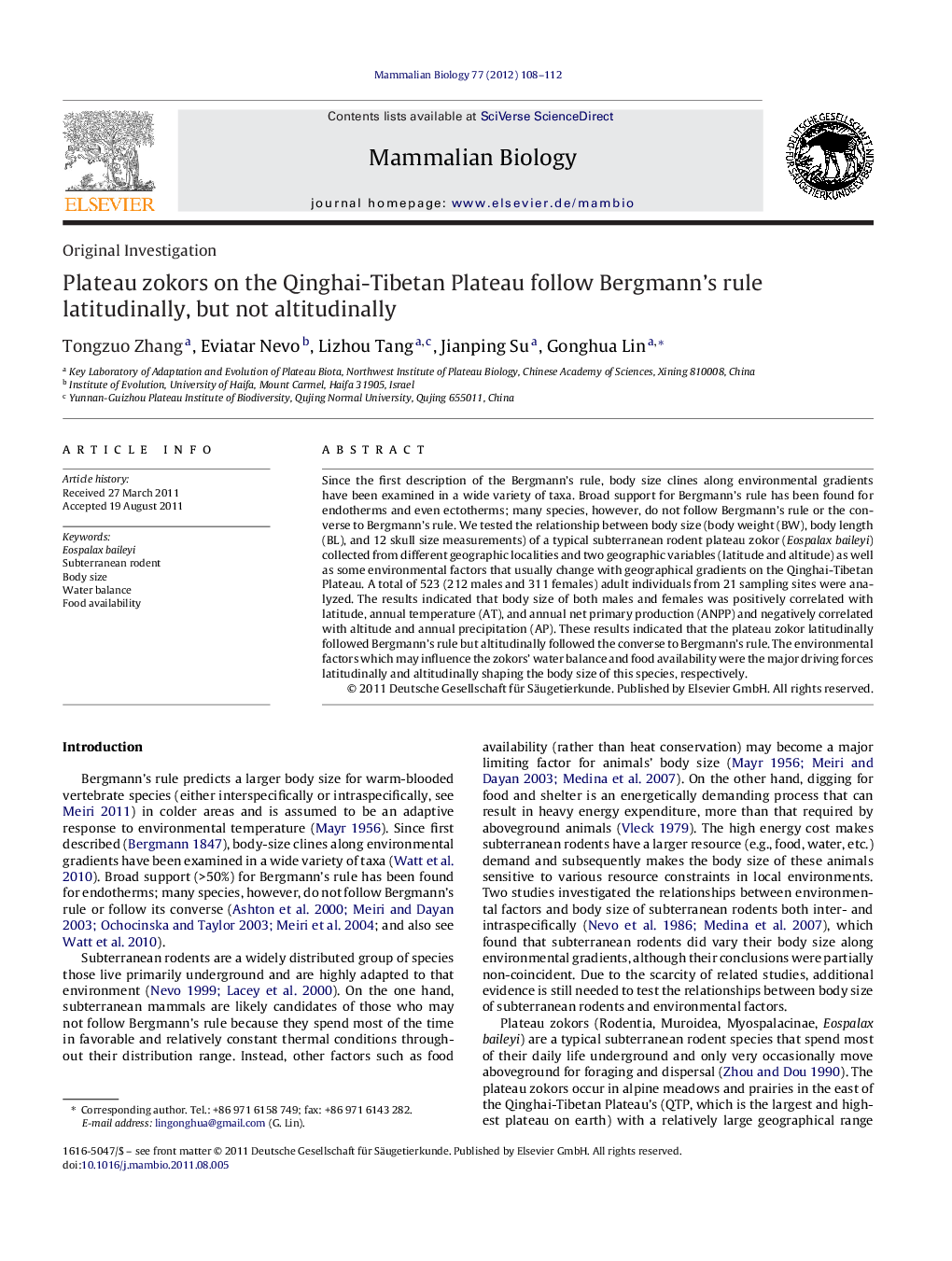| Article ID | Journal | Published Year | Pages | File Type |
|---|---|---|---|---|
| 2193786 | Mammalian Biology - Zeitschrift für Säugetierkunde | 2012 | 5 Pages |
Since the first description of the Bergmann's rule, body size clines along environmental gradients have been examined in a wide variety of taxa. Broad support for Bergmann's rule has been found for endotherms and even ectotherms; many species, however, do not follow Bergmann's rule or the converse to Bergmann's rule. We tested the relationship between body size (body weight (BW), body length (BL), and 12 skull size measurements) of a typical subterranean rodent plateau zokor (Eospalax baileyi) collected from different geographic localities and two geographic variables (latitude and altitude) as well as some environmental factors that usually change with geographical gradients on the Qinghai-Tibetan Plateau. A total of 523 (212 males and 311 females) adult individuals from 21 sampling sites were analyzed. The results indicated that body size of both males and females was positively correlated with latitude, annual temperature (AT), and annual net primary production (ANPP) and negatively correlated with altitude and annual precipitation (AP). These results indicated that the plateau zokor latitudinally followed Bergmann's rule but altitudinally followed the converse to Bergmann's rule. The environmental factors which may influence the zokors’ water balance and food availability were the major driving forces latitudinally and altitudinally shaping the body size of this species, respectively.
